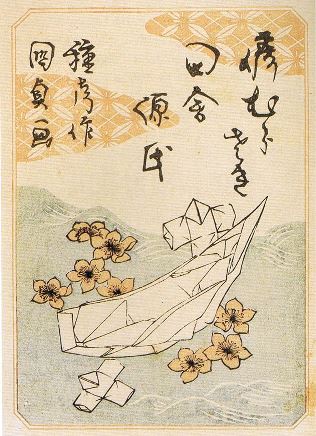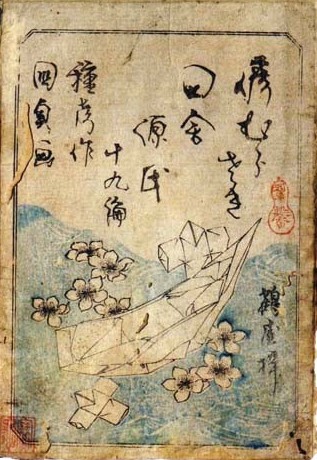| The Public Paperfolding History Project
Last updated 15/11/2025 x |
|||||||
| Print by Utagawa Kunisada, 1836 | |||||||
This print, which shows a Nakarabune and Komoso was mentioned by Satoshi Takagi in his 'Origami koten ni miru origami' (Origami from the Classics), which was published in 1993.
Roughly translated this reads: 'The other is the cover (which encases the first and second volumes together) of the 19th volume (published in 1836) which depicts a 'treasure ship' and a 'slave' Here we show a reprint edition with the volume number and publisher name removed, from the family collection, published after the Meiji period.' The reference to 19th volume is to 'Shuushi Inaka Genji' by Ryutei Tanehiko, which kunisada illustrated. The illustration in question is shown below:
********** The blog post Daruma Pilgrims in Japan: Suma and Iro no Hama contains the following information explaining the meaning of this print: 'Prince Genji came to exile in Suma and performed a purification ritual upon his arrival there ... Genji had part of the beach separated by a curtain, and called a calendar shaman to perform the rituals. The shaman put a folded paper doll on a small paper boat and floated it to take away the bad fortune of the prince.' This post also contains a second version of the print, attributed to Nara University, which may perhaps be the 1836 original:
********** |
|||||||


